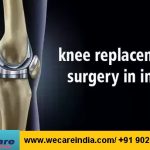RENOVASCULAR CONDITIONS SURGERY
What are renovascular conditions?
Renovascular conditions affect the blood vessels of your kidneys, called the renal arteries and veins. When the blood flow is normal through your kidneys, your kidneys rid your body of wastes. The kidneys filter these wastes into your urine, which collects in your bladder, and from there the wastes exit your body when you urinate. Your kidneys also help control your blood pressure by sensing the blood pressure and secreting a hormone, called renin, into your bloodstream. The amount of renin secreted by your kidneys can help regulate your blood pressure if it is too high or too low. When your kidney blood vessels narrow or have a clot, your kidney is less able to do its work. Your physician may diagnose you with renal artery stenosis or renal vein thrombosis.
What are the symptoms?
You may not notice any symptoms. Renovascular conditions develop slowly and worsen over time. If you have high blood pressure, the first sign that you may have renal artery stenosis is that your high blood pressure may become worse or the medications that you take to control your high blood pressure may not be as effective. Other signs of renal artery stenosis are a whooshing sound in your abdomen that your physician hears through a stethoscope, decreased kidney function, congestive heart failure or, eventually, a small shrunken kidney.
When renal vein thrombosis occurs, a clot in your vein may break free or block the flow in a healthy blood vessel.
If this happens, symptoms may include : –
- Pain in the sides of your abdomen, legs, or thighs.
- Blood in your urine.
- Protein in your urine.
- Fever, nausea, or vomiting.
- High blood pressure.
- Sudden, severe swelling in your leg; and
- Difficulty breathing.
Common Conditions Surgery in india
In renal artery stenosis, the artery carrying blood into a kidney has narrowed, as opposed to renal artery occlusion in which one or both of the renal arteries has become blocked. In renal vein thrombosis, the renal veins are blocked. Renal atheroembolism affects the renal arterioles–the smallest segment of the blood vessel which feeds the capillaries. Arterial nephrosclerosis results from inflammation and cell death occurring in the renal arteries. And scleroderma renal disease is a complication of a skin disorder which has caused lesions in the arteries.
Because the condition generally progresses over time, there are no early warning signs; so the disease might not be diagnosed until after damage has been done. This can be especially true if the blockage is only affecting one kidney–as the other kidney is capable of doing the work for two.
In renal artery occlusion and renal vein thrombosis, when both kidneys are blocked suddenly, a person might experience back or side pain, blood in the urine, fever, nausea or vomiting. In the case of complete blockage, there might be no urine at all. With renal atheroembolism, there is a chance of having embolisms elsewhere in the body–such as in the retina.
How are renovascular conditions diagnosed?
Diagnosis begins with a physical exam and patient interview with questions about general health, medical history, and symptoms.
The physician may also order tests, including imaging of the kidneys and the blood vessels that supply the kidneys : –
- CT (computed tomography) scan, also known as a “cat scan”, or non-invasive imaging study involving small amounts of radiation exposure. A CT scan enables doctors to view what is going on in the inside of the body from the outside.
- MRI (magnetic resonance imaging), a machine that produces a detailed picture of the veins and arteries.














